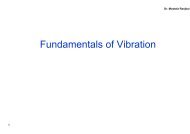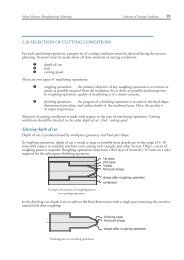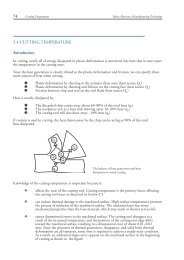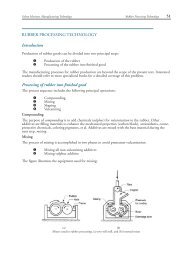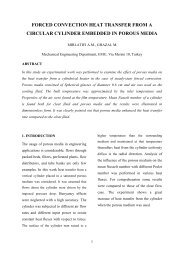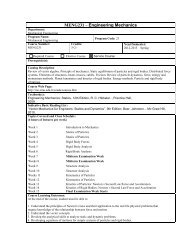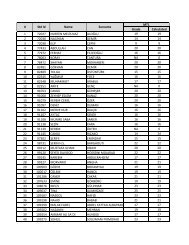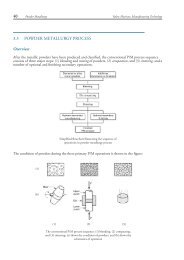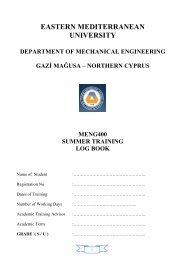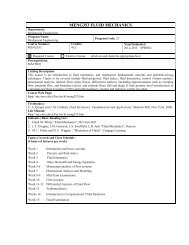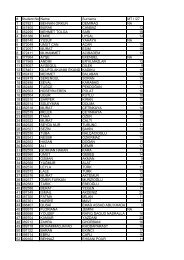Cutting Conditions In milling
Cutting Conditions In milling
Cutting Conditions In milling
You also want an ePaper? Increase the reach of your titles
YUMPU automatically turns print PDFs into web optimized ePapers that Google loves.
Valery Marinov, Manufacturing Technology<br />
Milling 111<br />
v Brazed cutters: Very limited number of cutters (mainly face mills) are made with<br />
brazed carbide inserts. This design is largely replaced by mechanically attached cutters.<br />
v Mechanically attached cutters: The vast majority of cutters are in this category. Carbide<br />
inserts are either clamped or pin locked to the body of the <strong>milling</strong> cutter.<br />
Classification of <strong>milling</strong> cutters may also be associated with the various <strong>milling</strong> operations. The figures<br />
below illustrate two of the most important types of <strong>milling</strong> cutters, end mills and ball-end mills.<br />
Two of the most widely used types of <strong>milling</strong> cutters with mechanically attached carbide inserts, (Left) end<br />
mills, and (Right) ball-end mills.<br />
Process capabilities and process planning in <strong>milling</strong> operations<br />
The surface quality and dimensional accuracy achieved in different types of <strong>milling</strong> depend on the<br />
type of <strong>milling</strong> operation. For rough cuts, the best surface finish is R a 100~50 µm, while for finishing<br />
cuts much better surface finish of R a 6.3~3.2 µm could be achieved. These values are approximate<br />
and for machining of steel. When cutting gray cast iron or non-ferrous materials, the surface finish<br />
is a grade higher.<br />
The process plan for <strong>milling</strong> of a single prismatic part includes the following basic steps:<br />
Cut off the stock slightly larger than required;<br />
Cut the basic outside dimensions to size using a <strong>milling</strong> machine;<br />
Lay out the basic features of the parts (in manual setups, this involves coating the surface<br />
with a blue stain, this is then cut and marked);<br />
Rough cut steps, radii, angles, grooves, etc.;<br />
Lay out the holes to be drilled, and then drill them starting with a center drill and<br />
gradually increasing the drill diameter;<br />
Finish cut part features;<br />
Make internal threads and ream holes if required;<br />
Deburr the finished part.<br />
For mass production, the process plan is significantly changed.




